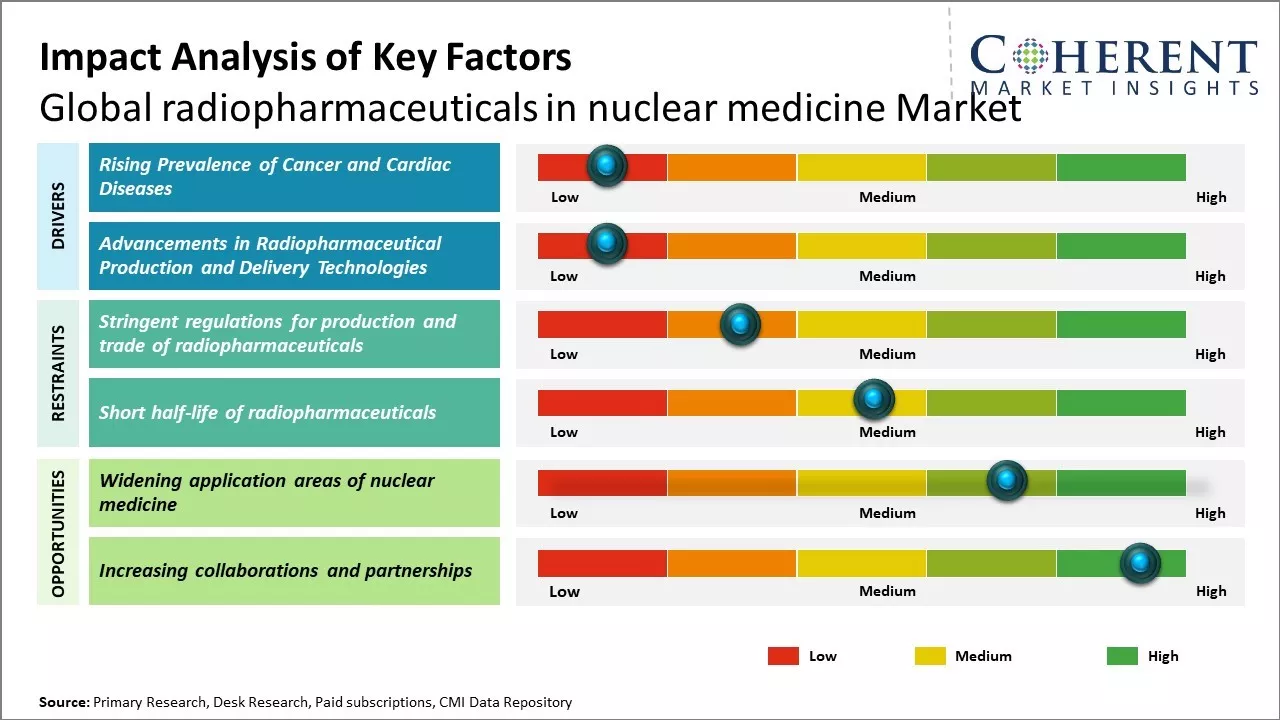Global radiopharmaceuticals in nuclear medicine market is estimated to be valued at USD 7.72 Bn in 2025 and is expected to reach USD 13.85 Bn by 2032, exhibiting a compound annual growth rate (CAGR) of 8.7% from 2025 to 2032.

To learn more about this report, Request sample copy
Rapid advancements in radiopharmaceutical production and increasing prevalence of cancer and cardiac ailments can drive the market growth during the forecast period.
Rising geriatric population susceptible to chronic diseases and increasing availability of diagnostic imaging modalities can drive the market growth. Furthermore, ongoing investments by key players to develop innovative radiotracers and radiopharmaceuticals can also drive the radiopharmaceuticals in nuclear medicine market growth. However, shorter half-lives of radiotracers posing bottlenecks in distribution and supply chain challenges can hamper the market growth.
Rising Prevalence of Cancer and Cardiac Diseases
Global radiopharmaceuticals in nuclear medicine market growth is driven by rising prevalence of various cancer and cardiac diseases across the globe. According to estimates, cancer has now become one of the leading causes of mortality worldwide with over 10 million new cases and 6 million deaths reported annually. There has been rise in incidence of cancer due to rapidly aging population, increasing adoption of western lifestyles, and growing exposure to various environmental risk factors like tobacco usage, pollution and radiation. Nuclear medicine plays a vital role in cancer management right from staging and restaging to assessing treatment response. Various radiotracers available have proven useful for imaging tumors and detecting their spread in different parts of the body. Positron emission tomography radiotracers like FDG are commonly used for whole body cancer screening and monitoring therapy progress. There has been rising burden of cardiovascular diseases due to sedentary lifestyles and unhealthy diets. Diseases like coronary artery disease, congenital heart diseases, stroke are leading to millions of deaths each year. Myocardial perfusion imaging using radiotracers is an important non-invasive diagnostic technique for evaluating coronary artery disease by assessing blood flow to the heart muscle. It helps determine the nature and extent of ischemia and influence treatment decisions. This wide application of radiopharmaceuticals for diagnosis and management of these highly prevalent chronic disorders can drive the market growth.
Joining thousands of companies around the world committed to making the Excellent Business Solutions.
View All Our Clients